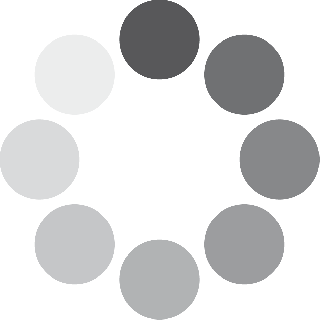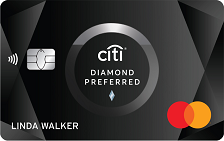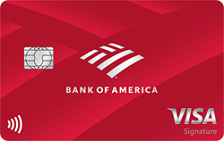Filter Options
×-
-
Unselect all
-
Unselect all
-
Unselect all

Showing 118 Cards
Sort By Column Name:
Chase Slate Edge℠

Chase Slate Edge℠
- 20.49% to 29.24% Variable Regular Purchase APR
- 20.49% to 29.24% Variable Balance Transfer APR
- 29.99% Variable Cash Advance APR
- 0% for the first 18 months from account opening date Intro Purchase APR
At a Glance
The Chase Slate Edge lets you make moves towards your credit goals with a host of impressive introductory bonuses. The card from Chase offers the chance at an automatic credit line increase, plus 0% intro APR for 18 months (with a variable APR after that) and automatic APR reduction when you pay on time after meeting minimum spending requirements– all for no annual fee.
- Best Benefits
- Rates & Fees
- Why Should You Apply?
- Start off strong with 0% Intro APR for 18 months from account opening on purchases and balance transfers. A variable APR of 20.49% - 29.24% on balance transfers and purchases after the introductory period ends.
- Lower your interest rate by 2% each year. Automatically be considered for an APR reduction when you pay on time, and spend at least $1000 on your card by your next account anniversary.
- Raise your credit limit. Get an automatic, one-time review for a higher credit limit when you pay on time, and spend $500 in your first six months.
- All for no annual fee - You won't have to pay an annual fee for all the great features that come with your Slate Edge℠ card
- Keep tabs on your credit health - Chase Credit Journey helps you monitor your credit with free access to your latest score, real-time alerts, and more
- Member FDIC
- Intro Purchase APR: 0% for the first 18 months from account opening date
- Regular Purchase APR: 20.49% to 29.24% Variable
- Intro Balance Transfer APR: 0% for the first 18 months from account opening date
- Balance Transfer APR: 20.49% to 29.24% Variable
- Balance Transfer Transaction Fee: Either $5 or 5% of the amount of each transfer, whichever is greater.
- Cash Advance APR: 29.99% Variable
- Cash Advance Transaction Fee: Either $10 or 5% of the amount of each transaction, whichever is greater
- Penalty APR: Up to 29.99% Variable
- Foreign Transaction Fee: 3% of the amount of each transaction in U.S. dollars
- You want to build credit with responsible usage
- You plan to carry a balance and will make use of the two 0% intro APR offers
- You don’t want to pay an annual fee
BankAmericard® Credit Card

BankAmericard® Credit Card
- 16.24% to 26.24% variable based on creditworthiness and Prime Rate Regular Purchase APR
- 16.24% to 26.24% variable based on creditworthiness and Prime Rate Balance Transfer APR
- 19.24% to 29.24% variable based on the Prime Rate Cash Advance APR
- 0% for 18 months from account opening date Intro Purchase APR
At a Glance
The BankAmericard Mastercard is the balance transfer card designed for those who want a special intro rate and little else. The card features 0% intro APR on purchases and balance transfers for the first 18 months. The card also boasts no penalty APR and no annual fee.
- Best Benefits
- Rates & Fees
- Why Should You Apply?
- No interest charges on purchases and balance transfers for the first 18 months from the date of account opening
- No penalty APR for late payments
- No annual fee
- Access your FICO® Score for free
- Intro Purchase APR: 0% for 18 months from account opening date
- Regular Purchase APR: 16.24% to 26.24% variable based on creditworthiness and Prime Rate
- Intro Balance Transfer APR: 0% for 18 months for any balance transfers made within 60 days from account opening date
- Balance Transfer APR: 16.24% to 26.24% variable based on creditworthiness and Prime Rate
- Balance Transfer Transaction Fee: Either $10 or 3% of the amount of each transfer, whichever is greater
- Cash Advance APR: 19.24% to 29.24% variable based on the Prime Rate
- Cash Advance Transaction Fee: Either $10 or 5% of the amount of each transaction, whichever is greater
- Foreign Transaction Fee: 3% of the transaction amount in U.S. dollars
- Late Payment Penalty Fee: Up to $40
- Return Payment Penalty Fee: Up to $29
- You plan to make a large purchase and use the card to pay off the balance over time
- You have existing credit card balances to combine and pay down
- You don’t want to pay an annual fee
TD FlexPay

TD FlexPay
- 18.99%, 20.99%, 23.99%, 26.99% or 28.99% variable based on creditworthiness and the Prime Rate Regular Purchase APR
- 18.99%, 20.99%, 23.99%, 26.99% or 28.99% variable based on creditworthiness and the Prime Rate Balance Transfer APR
- 30.24% variable based on the Prime Rate Cash Advance APR
At a Glance
The TD FlexPay credit card is a balance transfer card with a difference. Beyond a lengthy intro APR on transfers, cardholders have the peace of mind that they can schedule which billing cycle in the future to skip a monthly payment each year with no penalty.
- Best Benefits
- Rates & Fees
- Why Should You Apply?
- Get TD Bank's best balance transfer offer
- Skip a Payment once a year with no penalty
- No annual fee
- No foreign transaction fees
- Visa Platinum credit card benefits and protections
- Regular Purchase APR: 18.99%, 20.99%, 23.99%, 26.99% or 28.99% variable based on creditworthiness and the Prime Rate
- Intro Balance Transfer APR: 0% Introductory APR for the first 18 billing cycles
- Balance Transfer APR: 18.99%, 20.99%, 23.99%, 26.99% or 28.99% variable based on creditworthiness and the Prime Rate
- Balance Transfer Transaction Fee: Intro fee of either $5 or 3% of the amount of each transfer, whichever is greater, on transfers made within the first 18 billing cycles after Account opening referenced in the offer above After that: Either $5 or 5% of the amount of each transfer, whichever is greater.
- Cash Advance APR: 30.24% variable based on the Prime Rate
- Cash Advance Transaction Fee: Either $10 or 5% of the amount of each cash advance, whichever is greater.
- Late Payment Penalty Fee: Up to $40, first late payment fee refunded every 12 billing cycles.
- Return Payment Penalty Fee: Up to $39
- Minimum Deposit Required: N/A
- You want a balance transfer credit card that works around your needs
- You can be forgetful and want a card that understands nobody is perfect
- You plan to use the card for foreign trips or vacations
- You don't want to pay an annual fee
U.S. Bank Visa® Platinum Card

U.S. Bank Visa® Platinum Card
- 19.74% to 29.74% variable based on creditworthiness and the Prime Rate Regular Purchase APR
- 19.74% to 29.74% variable based on creditworthiness and the Prime Rate Balance Transfer APR
- 29.99% variable based on the Prime Rate Cash Advance APR
- 0% for 21 months from account opening date Intro Purchase APR
At a Glance
The U.S. Bank Visa Platinum Card is designed to compete directly with BT heavyweights like the Chase Slate Edge and the Citi Simplicity® Card. The card comes with an array of 0% APR offers and more.
- Best Benefits
- Rates & Fees
- Why Should You Apply?
- Get a 0% introductory APR on purchases and balance transfers for 21 billing cycles
- Receive coverage when pay your monthly cellular bill with your U.S. Bank Visa® Platinum Card
- Detects and notifies you of any unusual card activity to help prevent fraud
- Get your TransUnion® Credit Score at no cost
- Intro Purchase APR: 0% for 21 months from account opening date
- Regular Purchase APR: 19.74% to 29.74% variable based on creditworthiness and the Prime Rate
- Intro Balance Transfer APR: 0% for 21 months on balances transferred within 60 days from account opening
- Balance Transfer APR: 19.74% to 29.74% variable based on creditworthiness and the Prime Rate
- Balance Transfer Transaction Fee: Either $5 or 3% of the amount of each transfer, whichever is greater
- Cash Advance APR: 29.99% variable based on the Prime Rate
- Cash Advance Transaction Fee: Either $10 or 5% of the amount of each cash advance, whichever is greater
- Foreign Transaction Fee: 2% of the transaction amount in U.S. dollars
- Late Payment Penalty Fee: Up to $41
- Return Payment Penalty Fee: Up to $41
- You want an excellent 0% intro APR for 21 months to get a hold of your personal finances
- You don’t want to pay an annual fee
- You don’t mind a card that isn’t a rewards credit card
- You're planning on making a significant purchase and want to pay off the balance over time
- You want to pay off existing credit card debt without interest
Citi® Diamond Preferred® Card

Citi® Diamond Preferred® Card
- 17.99% - 28.74% (Variable) Regular Purchase APR
- 17.99% - 28.74% (Variable) Balance Transfer APR
- 29.99% (Variable) Cash Advance APR
- 0% for 12 months on Purchases Intro Purchase APR
At a Glance
The Citi® Diamond Preferred® Card provides one of the longest 0% intro APR periods on the market for no annual fee.
- Best Benefits
- Rates & Fees
- Why Should You Apply?
- 0% Intro APR for 21 months on balance transfers from date of first transfer and 0% Intro APR for 12 months on purchases from date of account opening. After that the variable APR will be 17.99% - 28.74%, based on your creditworthiness. Balance transfers must be completed within 4 months of account opening.
- There is a balance transfer fee of either $5 or 5% of the amount of each transfer, whichever is greater
- Get free access to your FICO® Score online.
- With Citi Entertainment®, get special access to purchase tickets to thousands of events, including concerts, sporting events, dining experiences and more.
- Intro Purchase APR: 0% for 12 months on Purchases
- Regular Purchase APR: 17.99% - 28.74% (Variable)
- Intro Balance Transfer APR: 0% for 21 months on Balance Transfers
- Balance Transfer APR: 17.99% - 28.74% (Variable)
- Balance Transfer Transaction Fee: 5% of each balance transfer; $5 minimum.
- Cash Advance APR: 29.99% (Variable)
- Cash Advance Transaction Fee: 5% of each cash advance; $10 minimum
- Penalty APR: Up to 29.99% (Variable)
- Annual Fee: $0
- Foreign Transaction Fee: 3%
- Late Payment Penalty Fee: Up to $41
- Return Payment Penalty Fee: Up to $41
- You make frequent purchases to entertainment events and want priority access
- You're looking for a generous introductory 0% APR period for both purchases and balance transfers
You've viewed 5 of 118 credit cards
What Are 0% Intro APR Credit Cards and Why Should You Choose One?
If you’re looking for a way to save money on interest charges, 0% intro APR credit cards can be a game-changer. These cards offer an introductory period during which you won’t be charged any interest on your purchases or balance transfers.
But what exactly are 0% intro APR credit cards, and how do they work?
How Do 0% Intro APR Credit Cards Work?
Zero-percent introductory APR credit cards allow cardholders to carry a balance for a set period. These periods can vary significantly, ranging from 6 months to a maximum of 21 months.
This can be incredibly beneficial if you want to make a big purchase or transfer a balance from a higher-interest credit card. During the promotional APR period, you can pay off your balance without incurring any interest charges. However, it’s important to note that the card’s regular APR will apply once the introductory period ends. So, it’s crucial to have a plan to pay off your balance before the intro period expires.
These cards are designed to attract individuals who want to pay off their existing credit card balances. They work by consolidating two or more credit card balances into one. This allows the cardholder to make a single payment to pay down both balances.
Cards with shorter introductory periods are ideal for those with lower balances. Conversely, individuals with larger balances or those looking to finance a significant purchase will benefit more from a card that offers a year or more of introductory APR.
What Are the Longest 0% Intro APR Offers?
It’s essential to note that the length of the 0% intro APR period can vary depending on the credit card issuer and the specific card. Some cards offer shorter intro periods of six months, while others may provide a more extended period of 18 months or more.
Here are the current longest 0% introductory APR periods on credit cards from the leading banks:
| Credit Card | Purchase Intro APR | Balance Transfer Intro APR |
|---|---|---|
| Citi Simplicity® Card | 0% for 12 months | 0% for 21 months |
| BankAmericard® | 0% for 21 months | 0% for 21 months |
| Chase Slate Edge | 0% for the first 18 months from account opening date | 0% for the first 18 months from account opening date |
| U.S. Bank Visa® Platinum Card | 0% for 21 months from account opening date | 0% for 21 months on balances transferred within 60 days from account opening |
| Wells Fargo Reflect Card | 0% for 21 months | 0% for 21 months |
Comparing Different 0% Intro APR Credit Cards
With so many 0% intro APR credit cards available, it’s essential to compare the different options to find the one that suits you best. Here are some key factors to consider when comparing different cards:
- Introductory Period: Look for a card with a longer introductory period if you need more time to pay off your balance or make your desired purchases.
- Regular APR: Compare the regular APRs of different cards to ensure you won’t be hit with high-interest charges once the intro period ends.
- Fees: Pay attention to any fees associated with the credit card, such as annual fees, balance transfer fees, or foreign transaction fees. Choose a card with minimal fees or one that aligns with your spending habits.
- Rewards Program: If you’re interested in earning rewards, compare the rewards programs offered by different card issuers, like Chase Ink or Capital One Spark. Consider the types of rewards, redemption options, and earning potential.
- Credit Score Requirements: Check the credit score requirements for each card to ensure you meet the criteria for approval. Most 0% APR credit cards require good or excellent credit scores to apply, but this may vary based on the offer.
By comparing these factors, you can narrow down your options and choose the credit card that best fits your financial needs.
Common Mistakes to Avoid
While 0% intro APR credit cards can be a powerful financial tool, there are common mistakes that cardholders should avoid to maximize their benefits. Here are some mistakes to steer clear of:
- Not Paying Off the Balance in Time: Failing to pay off the balance before the introductory period ends can result in high interest charges on the remaining balance.
- Making New Purchases During the Intro Period: Continuing to use the card for new purchases during the intro period can hinder progress in paying off the existing balance.
- Ignoring Fees: Being mindful of associated fees, such as balance transfer fees or annual fees, is essential to preserve the benefits of the 0% intro APR.
- Closing Old Credit Card Accounts: Closing old credit card accounts can negatively impact credit utilization ratio and should generally be avoided.
- Overlooking the Regular APR: While the 0% intro APR is appealing, it’s important to consider the regular APR that will apply after the intro period ends.
FAQs
Can I use a 0% intro APR credit card for balance transfers?
Yes, many 0% intro APR credit cards allow for balance transfers. This can be a useful strategy if you’re looking to consolidate high-interest debt onto a card with no interest charges during the intro period.
What happens if I don't pay off my balance before the intro period ends?
If you don’t pay off your balance before the intro period ends, you’ll be subject to the regular APR, which can be significantly higher. It’s crucial to have a repayment plan in place to avoid high interest charges.
Can I earn rewards with a 0% intro APR credit card?
Yes, some 0% intro APR credit cards offer rewards programs. These programs allow you to earn rewards on your everyday spending, providing additional benefits alongside the interest savings.
Will applying for a 0% intro APR credit card affect my credit score?
Applying for a new credit card may have a temporary impact on your credit score due to the hard inquiry. However, if you make timely payments and manage your credit responsibly, the long-term impact should be positive.
What should I do if my credit score is not high enough to qualify for a 0% intro APR credit card?
If your credit score is not high enough to qualify for a 0% intro APR credit card, focus on improving your credit before applying. Pay your bills on time, reduce your debt, and review your credit report for any errors that need to be corrected.
Conclusion
0% intro APR credit cards can be an excellent tool for saving money on interest charges and managing your finances. By understanding how these cards work, considering key factors when choosing a card, and using it wisely, you can maximize the benefits they offer.
Remember to compare different cards, avoid common mistakes, and create a repayment plan to pay off your balance before the intro period ends. With proper research and responsible use, a 0% intro APR credit card can help you achieve your financial goals and save money in the process.
Check out more
Low & 0% Intro APR Credit Cards
Editorial Disclosure – The opinions expressed on BestCards.com's reviews, articles, and all other content on or relating to the website are solely those of the content’s author(s). These opinions do not reflect those of any card issuer or financial institution, and editorial content on our site has not been reviewed or approved by these entities unless noted otherwise. Further, BestCards.com lists credit card offers that are frequently updated with information believed to be accurate to the best of our team's knowledge. However, please review the information provided directly by the credit card issuer or related financial institution for full details.



